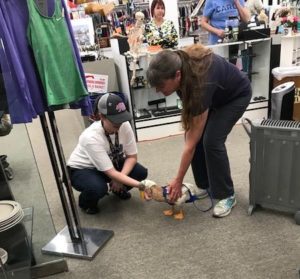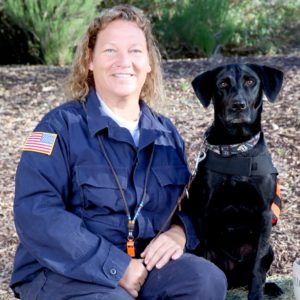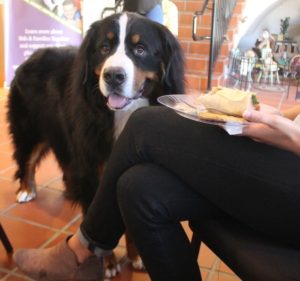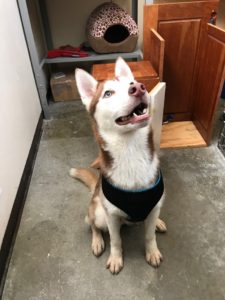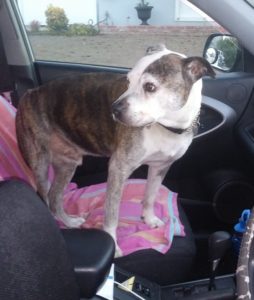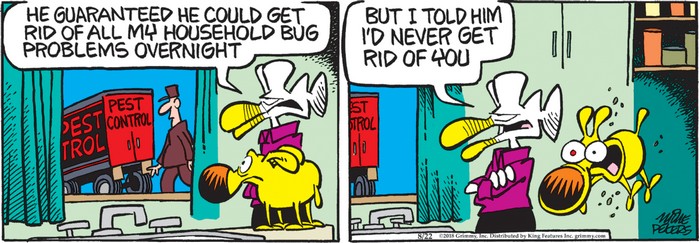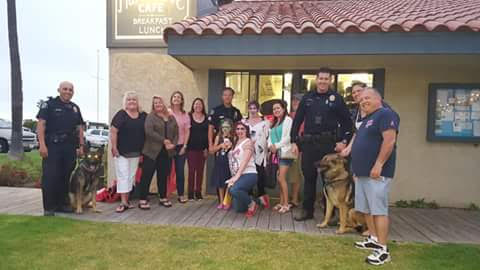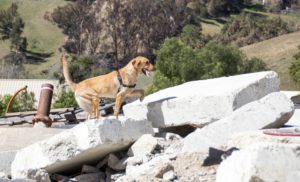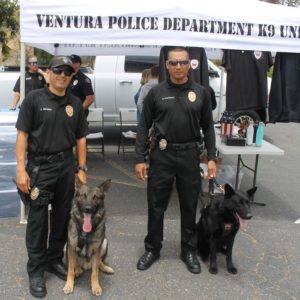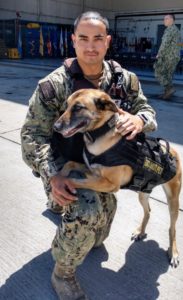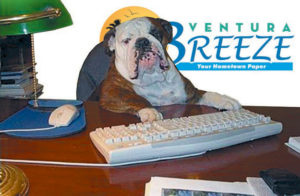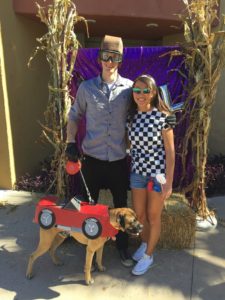
• A correction to the photo and caption published in the Nov. 6th Ventura Breeze. The two that tied for Best in Show at the Ventura Harbor Village Howl-O-Ween dog costume contest were the train with the conductor and # 26 the race car dog. The later was to the right of the train and not shown in the picture published. the dog’s name is Turbo, pictured with his owner Michael DiGiulio and girlfriend Jia Wiebe.
• Can dogs help us figure out cancer?
Two recent articles published in the journal Breast Cancer Research and Treatment suggest that man’s best friend could light the path towards fighting cancer.
A team of researchers from across Europe have found that canine breast cancer remarkably resembles human breast cancer, suggesting that treatments effective on dogs could be as beneficial to their owners.
In the two related studies, researchers from France, Spain, Portugal, and Germany studied 350 dogs of various breeds with breast cancer. The first article details how factors used in human prognosis—tumor size, lymph node malignancy, kidney function, and other criteria—were applied to dogs with mastectomies, successfully predicting their survival rates.
The second study examines how chemical analysis, which is common in human diagnosis, applies to canine cancer cells. Researchers here discovered that more than three-fourths of those dogs developed an especially aggressive type of breast cancer for which there is currently no targeted treatment.
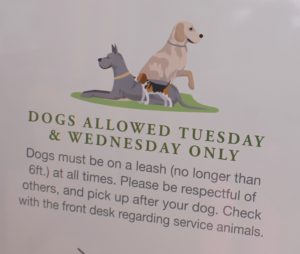
•Researchers at an Ontario university have used 3D-printing technology to replace the majority of a dog’s cancer-ridden skull, a novel procedure they say marks a major advancement in veterinary medicine.
Michelle Oblak, a veterinary surgical oncologist with the University of Guelph’s Ontario Veterinary College, said she believes the procedure is the first of its kind in North America and a substantive leap from one other known case. “Our hope is this is something that could be more widely available on a broad scale,” Oblak said. “It went very well.”
Patches, the nine-year-old dachshund at the center of the procedure, had a brain tumor the size of an orange that grew through her skull and would have been fatal if not treated.
“We called her our little unicorn because she had this bump on her head, but it would have killed her,” said Danielle Dymeck, who is from Willamsport, Pa. “It’s pretty amazing what they did for my girl.”
• By Dr. Celeste Conn who has a house call practice in Kent County. Visit her website at thevisitingvet.net.
My pets don’t brush their teeth every day. Do yours? Probably not.
While the best current advice is for owners to fulfill this task daily for our animals, my guess is few do.
Veterinarians routinely advise daily tooth brushing, advanced at-home care and routine hospital cleanings.
Just why is dental care so important? Obviously, we don’t brush teeth so dogs have nice white smiles. We perform home care for the same reason humans do — to minimize bacterial buildup on the tooth surface and to decrease plaque formation.
Plaque is a combination of bacteria, chemicals from saliva and food bits, which when not removed, accumulate to form a hard deposit on the tooth surface. Plaque can mineralize into tartar in a scant 36 hours.
Tartar, or calculus, can cut into the gum line, extending to the part of the tooth hidden under the gum. It can push the gum away from the tooth surface, allowing a pocket to form which accumulates more bacteria, food particles and debris. That’s why daily brushing is recommended-to stop the cascade.
Tooth decay, halitosis (bad breath), then bone loss occurs around a diseased tooth. It happens because the attachment of the tooth to the socket it sits in is lost.
The rules for good oral health are the same, whether dog, cat or human. Daily brushing, using a soft brush certainly helps to prevent plaque from becoming tartar. And there are animal-specific toothpastes which are not harmful if swallowed.
Animal pastes do not form suds like ours do and are flavored to increase acceptance. Dental rinses, treats and diets contribute to good oral health too.
Dental diets, which are veterinary prescription products, act to physically abrade tartar from the tooth surface by virtue of their large size and honeycomb architecture. Dental treats often use chemical means to scrub off plaque and encourage chewing.
Because in-hospital dental cleaning must be performed under anesthesia, animals need blood work to ensure their major organs can tolerate sedation. The frequency with which the procedure is done varies from pet to pet. Small breed dogs often require yearly or even biannual cleanings whereas larger breed dogs whose teeth are not so crowded may go several years between. Whether animals eat canned or dry food can also influence frequency.
Neglecting an animal’s oral hygiene has significant impact on his or her overall health. Bacteria from a diseased mouth can easily spread to other parts of the body. The valves of the heart are a notorious target for bacterial contamination as are the filtering cells of the kidney. Owners and veterinarians can and should work together to keep pets healthier through good dental care.


